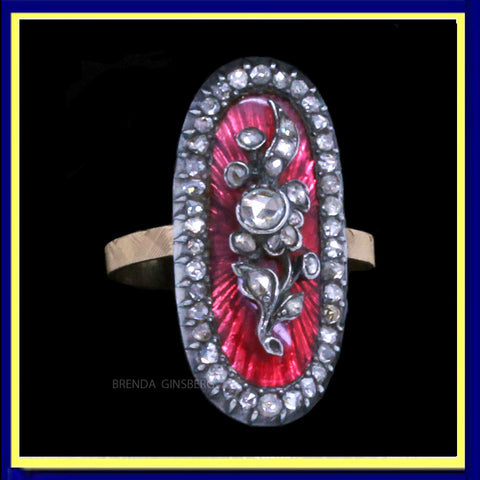French jewelry vocabulary 1 - post 242
Antique Jewelry French Terminology - 1
French terms for Ring shapes. Not a French vocabulary lesson.
I was told that there are hundreds of words in the Japanese language for what we call 'blue'. Variations that we struggle to differentiate and describe in our own language.
In English, we usually, just say 'ring'. The French are more discriminating and adept at describing the shape of the ring.
They have many specialised words used to describe different types of rings.
You can't always use a dictionary or Google Translate to understand the correct meaning within the jewelry context of these words. I do not speak French, but thanks to my work I go to Paris in search of great antique jewelry. I have learned a few of these terms as they relate to antique jewelry from repeated experience with them.
They are not literal translations.
For non-French speakers like myself, it is useful to know what they mean.
Here are a few examples and how I understand them. If I am wrong, please correct me.
1. #7007 
NAVETTE. Sometimes called 'boat' shaped and sometimes referred to as "MARQUIS" shaped. Neither of these terms is very helpful. It's like saying "how long is a string?" What does it mean?
What they mean is a ring that is generally oval in shape with pointy ends.
"MARQUIS" is sometimes used in the same way as NAVETTE, sometimes with more rounded edges and I've even seen a long rectangle with canted corners referred to as "marquis". #7084 
 2. #6818
2. #6818 
MARGUERITE literally means Daisy. So, we already know that a Marguerite ring is going to have a round center and radiating 'petals', much like a daisy flower.
There are those who claim that Madame Pompadour was the first wearer of this kind of ring, but surely we have seen rings in this shape from long before that. The French do get embroiled in arguements about who was first. (see posts on miniature eye and blue enamel jewelry).
3. #6725 
DUCHESSE. This is more difficult to define. Duchesse rings for one, are not symmetrical. The Duchesse ring is different lengthwise to sideways. In length, it often features one or two pear-shaped stones set lengthwise (front to back of the finger). The pear-shaped gems or pearls with narrow/pointy edge in the center, near the shank. At the meeting place of these pointy edges and shank, there might be a few smaller, round gems. These do not extend sideways as much as the long, pear-shaped stones extend lengthwise. This makes sense because of course, fingers are much longer than they are wide. There are many variations according to the number of gems used. For example, one long, pointy pear-shaped gem on one side of the shank and a smaller round one on the other. In general, they are longer in one direction and shorter in the other.
In many cases, the cross section of the bezel is in the form of a pair of swags or half-loops, like flying bird wings in a child's drawing.
4.The general Bague Duchesse (long over the length of the finger with shorter sides) is very different from the
DUCHESSE ANNE ring, which has a pair of hearts under 3 cabochon garnets and another 2 cabochon garnets on either side of the hearts. These are usually in silver, but may be gilded or partially gilded.

As you can see, nothing is very clear when it comes to French. Next week, we might look at some more French jewelry terms and understand a little more and get a little more confused at the same time. Welcome to my world.
Questions: Please email antiques@brendaginsberg.com
Find jewelry on www.brendaginsberg.com

